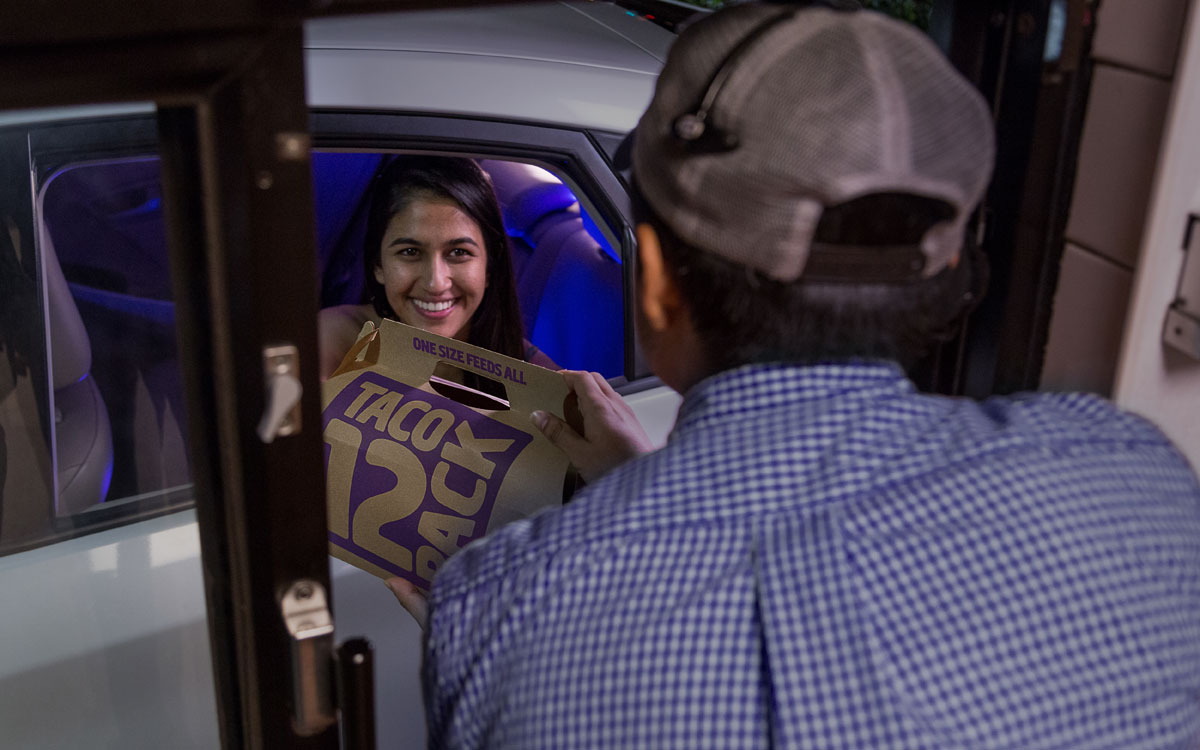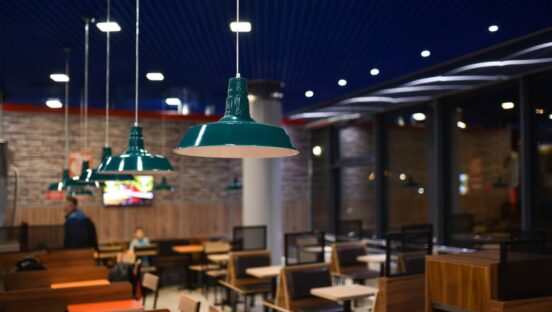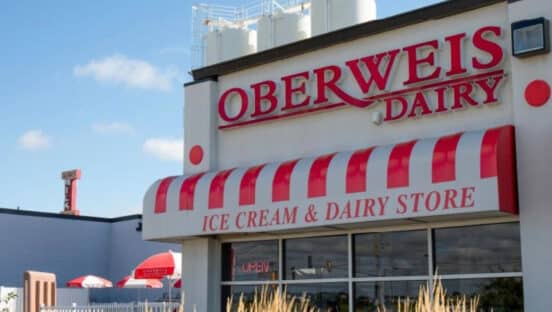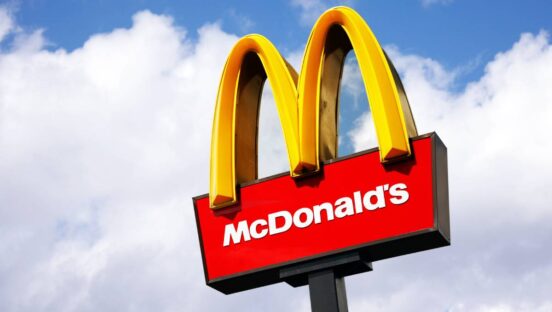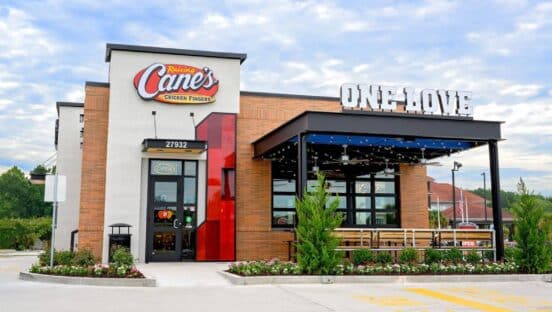Note: This is part one of a three-part series on the state of the restaurant industry in 2021. Check out Part 2 here (on off-premises growth), and Part 3 here (on technology and hospitality).
Restaurants will bounce back. Resiliency is the backbone of this industry, and always has been. So is innovation. And this past year sparked both unlike any period on record, which is not a prisoner-of-the-moment reaction.
The sector ended 2020 with total sales $240 billion below the National Restaurant Association’s pre-pandemic forecast. Although restaurant and foodservice sales are expected to post double-digit growth this year, the Association said, it won’t be nearly enough to make up for the losses.
On Tuesday, the Association released its annual State of the Restaurant Industry Report. Of course, this was nothing like past versions.
The report measured the impact of COVID-19 on the industry and examined the current state of key restaurant pillars, including technology and off-premises, labor, and menu trends across segments from a survey of 6,000 operators and consumer preferences from 1,000 adults.
The theme: A path to recovery, and a year of transition.
This calendar is starting in a hole for restaurants. There’s no real other way to frame it. More than 8 million eating and drinking place employees were laid off or furloughed during the depth of coronavirus. The sector finished 2020 with nearly 2.5 million jobs below its pre-coronavirus level. To offer perspective, if the economy as a whole suffered the same level of job losses as restaurants, America would be staring down 30 million jobs gone. Restaurants have represented one in four of the 10 million overall jobs forfeited.
By December, the Association said 110,00 eating and drinking places were closed long term or for good. It’s a statistic that’s hovered in recent weeks, and felt somewhat loose and difficult to comprehend. Almost like living with someone for months and not noticing how they’ve changed. But the Association put a face on the figure Tuesday—revealing the majority of permanently closed restaurants are well-established businesses in operation for 16 years. In fact, 16 percent were open for at least three decades.
This is the tangible tragedy of COVID as it pertains to restaurants. The pandemic did not simply sweep brands on the brink off the cliff, like some pundits suggest. It plucked legacy operations and communities fixtures off the map. These restaurants employed an average of 32 people, the Association said; and 17 percent employed at least 50 people before they closed.
Without direct aid, and maybe even with it, COVID will fracture the landscape. It might take years, or longer, to rebalance. Demand for restaurants will flood once dining rooms are deemed safe again, but thousands of small restaurants might not get a shot at it. Instead, restaurants owned by larger businesses with cash reserves and access to credit are poised to take advantage.
This is no small shift. Businesses with fewer than 500 employees account for almost two-thirds of restaurant industry employment compared to 47 percent among businesses as a whole. Much smaller businesses—those with 100 employees or fewer—total more than half of restaurant employment compared to 33 percent among all businesses.
So it bears asking if COVID will take some of the industry’s entrepreneurial spirit along with it. Seventy-two percent of restaurant owners who closed for good said it’s unlikely they’ll open another restaurant concept in the months or years ahead. Only 48 percent think they’ll stay in the industry in some form in the months or years ahead.
The end-game could be a more unequal field with business shifting from small and immigrant-owned restaurants to larger brands. More sizable chain restaurants will also be primed to expand and obtain prime restate left behind from any rationalization, potentially locking in a permanent and inequality-widening change in the sector, according to a recent report from Congressional Joint Economic Committee Democrats.
The situation is not lost on consumers, the Association said. In one survey, 92 percent of adults expressed concern that businesses in their community, including restaurants, may not be able to survive the economic fallout of COVID, and 60 percent were aware of a restaurant in their community that permanently shuttered because of it.
Restaurants faced a bevy of stressors to their bottom line, including the sales shortfall at eating and drinking places, plus a sharp reduction in spending at foodservice operations in sectors such as lodging, arts/entertainment/recreation, education, health care, and retail.
The Association expects 2021 to be a “tale of two halves,” with conditions varying significantly by region. Sales growth across that first swath will continue to be challenged by on-premises capacity restrictions thanks to elevated cases, or a state of “restaurant purgatory,” so to speak. Then as the vaccine rollout widens by mid-year, conditions will inch forward. Local economies will reopen and restrictions ease. The result will almost surely favor restaurants, as studies have projected. Lisa W. Miller & Associates released national research in April asking 1,000 Americans 18 and older what activities provided the most “joy” that were suddenly gone from their routines. No. 1? Dining out, at 81 percent. It also polled what people would “do first” once they could. Again, restaurants topped at 86 percent.
It seems a safe wager restaurants are going to thrive once the gates open.
[image source_ID=”128176″]
Let’s take a deeper look at sales trends, according to Association estimates.
Eating and drinking places
- 2019 sales (billions): $615.9
- 2020 sales (billions): $497.6
- 19–20 percentage change: –19.2 percent
- 2021 sales (billions): $548.3
- 20–21 percentage change: 10.2 percent
- 20–21 real percentage change: 6.7 percent
Full-service segment
- 2019 sales (billions): $285
- 2020 sales (billions): $199.5
- 19–20 percentage change: –30 percent
- 2021 sales (billions): $220.8
- 20–21 percentage change: 10.7 percent
- 20–21 real percentage change: 7.6 percent
Limited-service segment
- 2019 sales (billions): $308.9
- 2020 sales (billions): $290.4
- 19–20 percentage change: –6 percent
- 2021 sales (billions): $313.6
- 20–21 percentage change: 8 percent
- 20–21 real percentage change: 4 percent
Bars and taverns
- 2019 sales (billions): $22
- 2020 sales (billions): $7.7
- 19–20 percentage change: –65 percent
- 2021 sales (billions): $13.9
- 20–21 percentage change: 80.2 percent
- 20–21 real percentage change: 77.6 percent
All other foodservice establishments
- 2019 sales (billions): $248.4
- 2020 sales (billions): $161.5
- 19–20 percentage change: –35 percent
- 2021 sales (billions): $183.2
- 20–21 percentage change: 13.5 percent
- 20–21 real percentage change: 10.4 percent
Total
- 2019 sales (billions): $864.3
- 2020 sales (billions): $659
- 19–20 percentage change: –23.8 percent
- 2021 sales (billions): $731.5
- 20–21 percentage change: 11 percent
- 20–21 real percentage change: 7.5 percent
Perhaps the most alarming figure of the bunch is the fact full-service restaurants shed $85.5 billion in sales, year-over-year.
Not to be lost, either, is the ripple effect on supply chain dynamics. The Association said 85 percent of supply chain businesses reported lower revenues in 2020 compared to the previous year. On average, numbers dropped 30 percent. Seventy percent said they laid off or furloughed employees during COVID. A third said staffing levels were down more than 20 percent from usual.
Additionally, profit margins were lower in 2020 for 71 percent of supply chain businesses surveyed by the Association, and 15 percent said it’s unlikely they’ll be in business six months into 2021 without government relief.
Nearly eight in 10 adults said their favorite restaurant foods deliver flavor and taste sensations that just can’t be duplicated at home.
The state of the consumer
Building off the pent-up demand angle, restaurants are going to chase customers in ways they hadn’t before. New occasions will be up for grabs with fewer restaurants in the mix, especially concerning demographic shifts tied to COVID, like young families migrating from urban to suburban markets. Also, the expansion of digital outreach and how it’s enabled restaurants to introduce themselves to first-time users.
An age-old method to gain a competitive edge was to “know your customer.” But doing so today is harder because guests are not the same type of people who walked through the door a year ago. According to the Association, three in four operators across six major restaurant segments said their customer base has significantly changed since the onset of COVID.
Percentage of restaurant operators who say their customer base has significantly changed:
- Family dining 78 percent
- Casual dining: 77 percent
- Fine dining: 77 percent
- Quick service: 81 percent
- Fast casual: 75 percent
- Coffee and snack: 76 percent
The Association suggests concentrating on customers who are actively using restaurants. In essence, look at people who are dining out and those who aren’t. Don’t try to inspire business from customers scared to leave the house. And don’t zero in on past metrics.
Or put another way: Restaurant operators might want to stop trying to appeal to everybody, the Association said.
Here’s a guidebook:
Percentage of adults who plan to dine off-premises and on-premises
All adults
- Total off-premises: 77 percent
- Total on-premises: 49 percent
- Sit at a table inside: 36 percent
- Sit at a table outside: 25 percent
Gender
Male
- Total off-premises: 77 percent
- Total on-premises: 52 percent
- Sit at a table inside: 40 percent
- Sit at a table outside: 26 percent
Female
- Total off-premises: 77 percent
- Total on-premises: 46 percent
- Sit at a table inside: 33 percent
- Sit at a table outside: 25 percent
Age group
Gen Z adults (18–23)
- Total off-premises: 66 percent
- Total on-premises: 53 percent
- Sit at a table inside: 31 percent
- Sit at a table outside: 30 percent
Millennials (24–39)
- Total off-premises: 76 percent
- Total on-premises: 50 percent
- Sit at a table inside: 37 percent
- Sit at a table outside: 28 percent
Gen X (40–56)
- Total off-premises: 80 percent
- Total on-premises: 51 percent
- Sit at a table inside: 41 percent
- Sit at a table outside: 24 percent
Baby Boomers (56–74)
- Total off-premises: 81 percent
- Total on-premises: 44 percent
- Sit at a table inside: 31 percent
- Sit at a table outside: 23 percent
Household income
Less than $50,000
- Total off-premises: 74 percent
- Total on-premises: 43 percent
- Sit at a table inside: 30 percent
- Sit at a table outside: 19 percent
$50,000–$99,000
- Total off-premises: 80 percent
- Total on-premises: 53 percent
- Sit at a table inside: 44 percent
- Sit at a table outside: 28 percent
$100,000 or more
- Total off-premises: 81 percent
- Total on-premises: 60 percent
- Sit at a table inside: 40 percent
- Sit at a table outside: 36 percent
Region
Northeast
- Total off-premises: 73 percent
- Total on-premises: 50 percent
- Sit at a table inside: 39 percent
- Sit at a table outside: 24 percent
Midwest
- Total off-premises: 82 percent
- Total on-premises: 47 percent
- Sit at a table inside: 40 percent
- Sit at a table outside: 18 percent
South
- Total off-premises: 77 percent
- Total on-premises: 55 percent
- Sit at a table inside: 43 percent
- Sit at a table outside: 28 percent
West
- Total off-premises: 78 percent
- Total on-premises: 40 percent
- Sit at a table inside: 20 percent
- Sit at a table outside: 27 percent
Size of community
Urban
- Total off-premises: 74 percent
- Total on-premises: 48 percent
- Sit at a table inside: 32 percent
- Sit at a table outside: 28 percent
Suburban
- Total off-premises: 79 percent
- Total on-premises: 51 percent
- Sit at a table inside: 37 percent
- Sit at a table outside: 27 percent
Rural
- Total off-premises: 79 percent
- Total on-premises: 46 percent
- Sit at a table inside: 40 percent
- Sit at a table outside: 17 percent
More on the so-called “pent-up demand”
Evidence continues to mount in restaurants’ favor. People are tired of quarantine behavior. They want to reconnect. And like always, they’re banking on restaurants to help them regain some semblance of normality. Here, parallels to the Great Recession could emerge. With pockets tight and spending trends in chaos, people might scrap higher-ticket experiential items, like vacations, in favor of dining out. Whether that ends up spot on or not, there’s little doubt people miss going to restaurants.
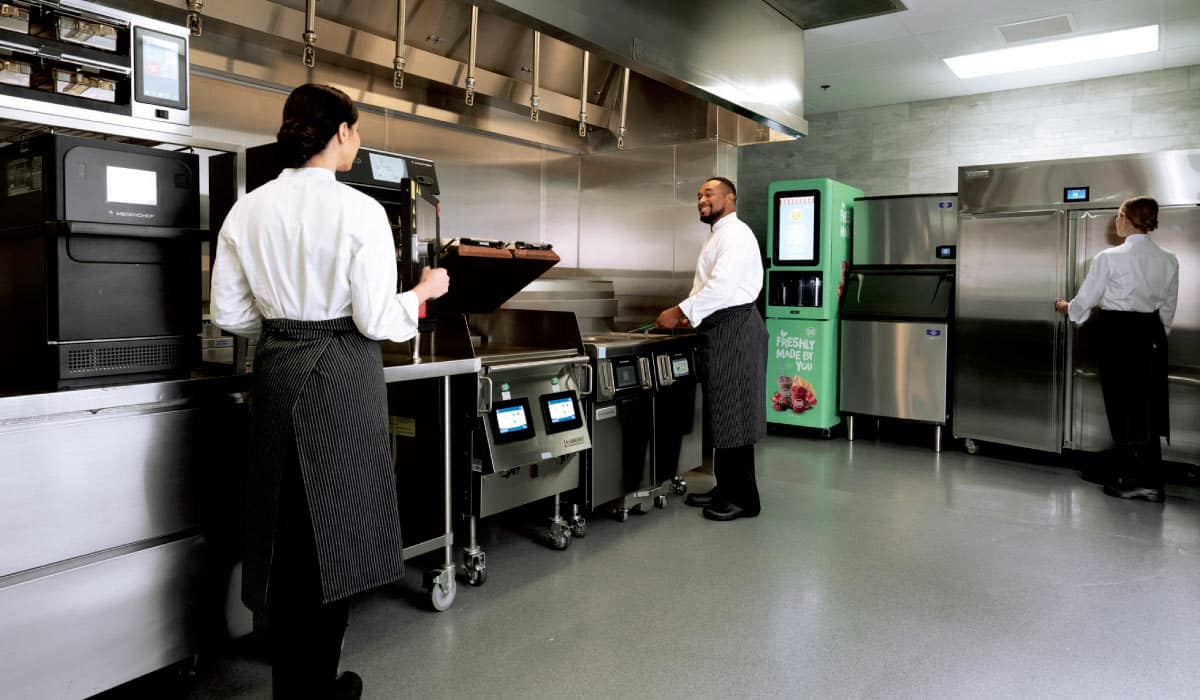
In late April, 83 percent of adults said they were not eating on-premises at restaurants as often as they’d like—a big jump from the 45 percent reported in January 2020, and easily the highest level ever recorded in 20 years of the Association fielding this question. While pent-up demand for on-premises visits settled at 67 percent by early December, it was clear consumers wanted to return, the Association said.
And this is still going. The early uptick in off-premises restaurant use tracked with pent-up demand. In January 2020, 44 percent of adults said they weren’t ordering takeout or delivery as often as they’d like. It rose to 52 percent in late April and trended lower after that. The figure slid to 33 percent by December. The dressed-down way to describe this is that consumers are used to ordering food to-go now, and they’re also eager to get back inside restaurants.
Percentage of consumers who say they are not using restaurants as often as they would like:
January 17–20, 2020
- Eating on-premises at restaurants: 45 percent
- Purchasing takeout/delivery from restaurants: 44 percent
April 24–26, 2020
- Eating on-premises at restaurants: 83 percent
- Purchasing takeout/delivery from restaurants: 52 percent
June 26–28
- Eating on-premises at restaurants: 74 percent
- Purchasing takeout/delivery from restaurants: 42 percent
September 4–6
- Eating on-premises at restaurants: 71 percent
- Purchasing takeout/delivery from restaurants: 36 percent
December 4–6
- Eating on-premises at restaurants: 67 percent
- Purchasing takeout/delivery from restaurants: 33 percent
One of the keys for restaurants will be trying to predict who wants to come back, and when. Which demographics miss restaurants the most? According to the Association, Boomers are keen. Women more so than men as well.
Percentage of adults who are not using restaurants as often as they’d like
All adults
- Eating on the premises at restaurants and fast-food place: 67 percent
- Purchasing takeout or delivery: 33 percent
Gender
Male
- Eating on the premises at restaurants and fast-food place: 60 percent
- Purchasing takeout or delivery: 27 percent
Female
- Eating on the premises at restaurants and fast-food place: 74 percent
- Purchasing takeout or delivery: 37 percent
Age group
Gen Z
- Eating on the premises at restaurants and fast-food place: 56 percent
- Purchasing takeout or delivery: 25 percent
Millennials
- Eating on the premises at restaurants and fast-food place: 60 percent
- Purchasing takeout or delivery: 26 percent
Gen X
- Eating on the premises at restaurants and fast-food place: 65 percent
- Purchasing takeout or delivery: 34 percent
Baby Boomers
- Eating on the premises at restaurants and fast-food place: 76 percent
- Purchasing takeout or delivery: 37 percent
Household income
Less than $50,000
- Eating on the premises at restaurants and fast-food place: 74 percent
- Purchasing takeout or delivery: 41 percent
$50,000–$99,999
- Eating on the premises at restaurants and fast-food place: 63 percent
- Purchasing takeout or delivery: 27 percent
$100,000 or more
- Eating on the premises at restaurants and fast-food place: 58 percent
- Purchasing takeout or delivery: 20 percent
Region
Northeast
- Eating on the premises at restaurants and fast-food place: 68 percent
- Purchasing takeout or delivery: 31 percent
Midwest
- Eating on the premises at restaurants and fast-food place: 74 percent
- Purchasing takeout or delivery: 35 percent
South
- Eating on the premises at restaurants and fast-food place: 61 percent
- Purchasing takeout or delivery: 31 percent
West
- Eating on the premises at restaurants and fast-food place: 70 percent
- Purchasing takeout or delivery: 33 percent
Size of community
Urban
- Eating on the premises at restaurants and fast-food place: 59 percent
- Purchasing takeout or delivery: 31 percent
Suburban
- Eating on the premises at restaurants and fast-food place: 70 percent
- Purchasing takeout or delivery: 30 percent
Rural
- Eating on the premises at restaurants and fast-food place: 74 percent
- Purchasing takeout or delivery: 41 percent
Restaurants are in for a tough winter. U.S. COVID cases continue to exceed 1.5 million each week. Outdoor dining has taken a hit, for all of the creative fixes. And many markets remain heavily locked down, like New York City.
Just this week, Andrew Rigie, executive director of the NYC Hospitality Alliance, responded to Gov. Cuomo’s comment that indoor dining in the Big Apple remains off the table.
“Governor Cuomo’s never-ending restrictions keeping indoor dining closed at New York City restaurants, while keeping it open around the rest of the state where infection and hospitalization rates are higher than in New York City, is discriminatory and is destroying the livelihoods of small business owners and workers,” he said in a statement. “Multiple legal actions have been filed to reopen indoor dining in New York City and we are exploring all additional legal options on behalf of the city’s restaurant industry to ensure equitable treatment and application of the Governor’s Executive Orders.”
Like all COVID things, these next few months are going to be uneven in terms of how swift and severe the blow is. But regardless of what unfolds, customers are not gone for good, the Association said.
Eighty-eight percent of adults said they enjoy going to restaurants, and 85 percent said doing so with family or friends is a better way to spend their leisure time than cooking (and cleaning) at home.
Nearly eight in 10 adults said their favorite restaurant foods deliver flavor and taste sensations that just can’t be duplicated at home. Restaurants also play a leading role in our social nature. Six in 10 adults said restaurants are an essential part of their lifestyle.
“These feelings will only grow stronger over the coming months until the coronavirus clouds part,” the Association said.
The light at the end of the tunnel: Survive the winter and look forward to better days.
You enjoy going to restaurants
- All adults: 88 percent
- Gen Z: 83 percent
- Millennials: 88 percent
- Gen-X: 86 percent
- Baby Boomers: 90 percent
Going out to a restaurant with family and/or friends gives you an opportunity to socialize and is a better way for you to make use of your leisure time rather than cooking and cleaning up
- All adults: 85 percent
- Gen Z: 76 percent
- Millennials: 84 percent
- Gen-X: 84 percent
- Baby Boomers: 88 percent
Your favorite restaurant foods provide flavor and taste sensations that you can’t easily duplicate in your home kitchen
- All adults: 78 percent
- Gen Z: 76 percent
- Millennials: 78 percent
- Gen-X: 81 percent
- Baby Boomers: 75 percent
Restaurants are an essential part of your lifestyle
- All adults: 60 percent
- Gen Z: 59 percent
- Millennials: 65 percent
- Gen-X: 61 percent
- Baby Boomers: 58 percent
Part two of the series, which will be released at a later date,will cover off-premises trends, technology adoption, service changes, and marketing trends to emerge from COVID.

